Amethyst
Amethyst is a mineral that belongs to the quartz family, known for its purple to violet hue. It is a popular gemstone used in jewelry and has been prized for its beauty for centuries. The name “amethyst” comes from the Greek word “amethystos,” which means “not drunken,” as it was believed to have the power to prevent intoxication. Amethyst is the birthstone for the month of February and is also associated with properties such as calmness, stability, and mental clarity. From a geological perspective, amethyst is fascinating because of the way it forms and its presence in various geological settings. In this article, we will explore the formation, physical properties, mining and processing, and geological significance of amethyst.
Amethyst is a variety of the mineral quartz and has the same chemical formula as quartz, which is SiO2. This means that amethyst is composed of silicon and oxygen, with each silicon atom bonded to four oxygen atoms in a tetrahedral arrangement. The purple color of amethyst is due to the presence of trace amounts of iron and manganese in the crystal lattice. The exact composition of amethyst can vary depending on the specific deposit and the conditions under which it formed, but the basic chemical formula remains the same.
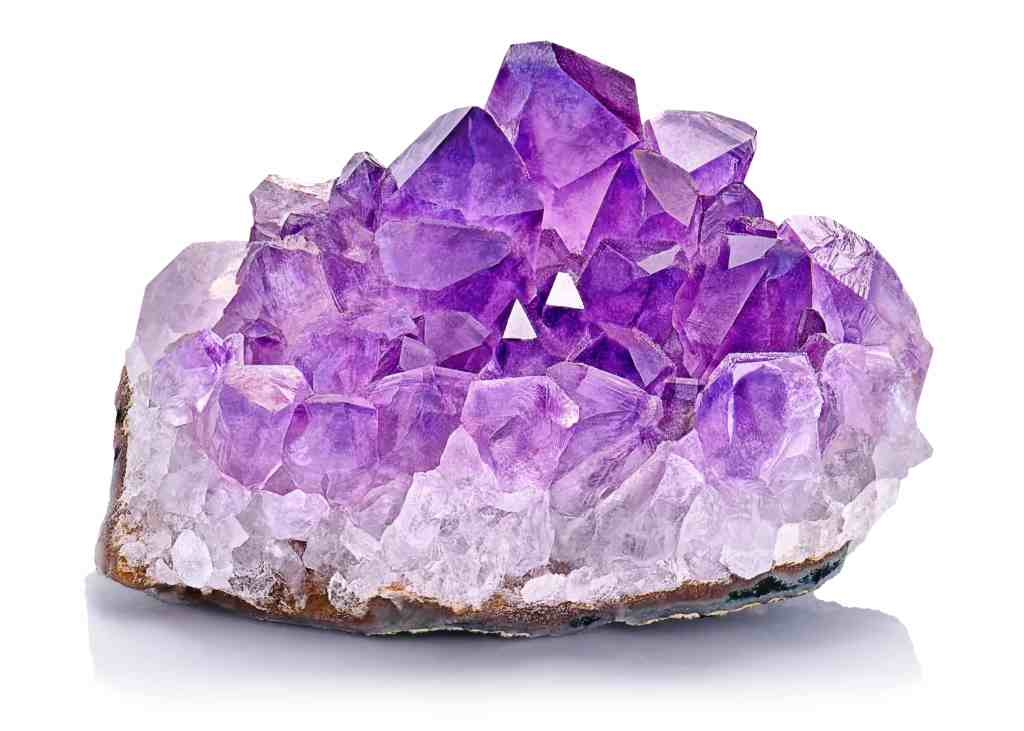
Formation of Amethyst
Amethyst forms in the Earth’s crust from the mineral quartz, which is one of the most common minerals on Earth. The purple coloration of amethyst is due to the presence of iron and other trace elements within the quartz crystal lattice. The exact conditions required for the formation of amethyst are still the subject of research, but several theories have been proposed.
One of the most widely accepted theories is that amethyst forms in hydrothermal veins, which are fractures in the Earth’s crust that are filled with hot mineral-rich fluids. These fluids can contain dissolved silica, which is the main component of quartz, as well as trace amounts of iron and other impurities. As the fluids cool and solidify, they form quartz crystals, which can develop the purple coloration characteristic of amethyst if the right conditions are present.
Another theory is that amethyst can form in the cavities and fractures of rocks as a result of precipitation from groundwater. This process is known as “secondary deposition” and can occur when water carrying dissolved minerals seeps into the ground and reacts with existing minerals. The resulting crystals can grow over time, forming amethyst geodes and other structures.
The exact conditions required for the formation of amethyst are still not fully understood, and researchers continue to study the mineral to gain a better understanding of its origins. Nevertheless, amethyst can be found in a variety of geological settings, including volcanic rocks, granite, and hydrothermal veins. The presence of amethyst in these rocks can provide valuable information about the geological history and processes that have shaped our planet.

Physical Properties of Amethyst
Amethyst is a variety of quartz, and as such, shares many of the physical properties of this mineral. Here are some of the key physical properties of amethyst:
- Color: Amethyst is typically purple to violet in color, although it can also range from pale lilac to deep purple.
- Crystal Structure: Amethyst has a hexagonal crystal structure, meaning that its crystals have six sides.
- Hardness: Amethyst has a Mohs hardness of 7, making it relatively hard and durable. This means it is resistant to scratching and can withstand moderate wear and tear.
- Cleavage: Amethyst has no distinct cleavage, meaning that it does not break along specific planes or directions.
- Transparency: Amethyst can be transparent to translucent, depending on the quality of the specimen.
- Luster: Amethyst has a vitreous (glassy) luster, which gives it a bright and shiny appearance.
- Specific Gravity: The specific gravity of amethyst is around 2.65, meaning that it is slightly denser than water.
- Refractive Index: The refractive index of amethyst is around 1.54 to 1.55, meaning that light bends slightly as it passes through the crystal.
- Fluorescence: Some amethyst specimens exhibit fluorescence, meaning that they emit visible light when exposed to ultraviolet light.
- Magnetism: Amethyst is not magnetic.
These physical properties make amethyst a valuable gemstone for use in jewelry and other decorative objects. Its hardness, durability, and attractive coloration make it a popular choice for both fine and costume jewelry. In addition, amethyst is also used in a variety of metaphysical and healing practices, where it is believed to possess certain properties that can promote mental clarity, emotional balance, and spiritual growth.

Optical and Chemical Properties of Amethyst
Optical Properties: 11. Birefringence: Amethyst exhibits birefringence, meaning that it can split a single beam of light into two rays as they pass through the crystal. The degree of birefringence depends on the orientation of the crystal.
- Pleochroism: Amethyst exhibits weak pleochroism, meaning that it can display different colors when viewed from different angles. However, this property is not very noticeable in most specimens.
- Dispersion: Amethyst has relatively low dispersion, meaning that it does not break light into its component colors very strongly.
Chemical Properties: 14. Chemical Composition: Amethyst is a variety of quartz with the same chemical formula as other quartz varieties: SiO2. However, amethyst contains impurities such as iron and other trace elements that give it its distinctive purple color.
- Mohs Hardness: As mentioned previously, amethyst has a Mohs hardness of 7, making it relatively hard and durable.
- Chemical Reactivity: Amethyst is chemically inert and does not react with most acids or other chemicals. However, it can be etched by hydrofluoric acid, which can dissolve the silica in the crystal lattice.
- Thermal Stability: Amethyst is thermally stable and can withstand high temperatures without melting or decomposing.
Overall, the optical and chemical properties of amethyst contribute to its unique appearance and make it a valuable and popular gemstone. The combination of its distinctive purple coloration, hardness, and relative abundance make it a versatile and widely used material in jewelry and other decorative applications.

Mining and Processing of Amethyst
Amethyst is mined from a variety of geological settings, including volcanic rocks, granite, and hydrothermal veins. The process of mining amethyst can vary depending on the location and type of deposit, but generally involves the following steps:
- Prospecting: Before mining can begin, geologists must identify areas that are likely to contain amethyst deposits. This may involve studying geological maps, conducting field surveys, and analyzing rock and soil samples.
- Exploration: Once a potential deposit has been identified, further exploration is conducted to determine the size, quality, and economic viability of the deposit.
- Extraction: Depending on the location and type of deposit, amethyst may be extracted using a variety of methods, including surface mining, underground mining, or placer mining. Surface mining involves removing overlying rock and soil to expose the amethyst-bearing rock beneath, while underground mining involves tunnelling into the earth to access the deposit. Placer mining involves extracting loose amethyst crystals from alluvial deposits.
- Sorting and Grading: After the amethyst has been extracted, it is sorted and graded based on its color, clarity, size, and other quality factors. High-quality amethyst specimens are highly sought after for use in jewelry and other decorative objects.
- Processing: Once the amethyst has been sorted and graded, it may undergo further processing to enhance its appearance or durability. This can include cutting, polishing, or heat treatment to improve its color or remove impurities.
- Market: The finished amethyst products are then sold to distributors, wholesalers, and retailers, who make them available to the public for use in jewelry, home decor, and other applications.
Overall, the mining and processing of amethyst can be a complex and time-consuming process, but the resulting gemstones are highly valued for their unique beauty and properties.

Explanation of the cutting and polishing process for amethys
The cutting and polishing process for amethyst is an important step in preparing the gemstone for use in jewelry and other decorative objects. The process typically involves the following steps:
- Planning: The first step in cutting and polishing amethyst is to plan out the shape and design of the final product. This may involve creating a template or sketch of the desired shape, taking into account the size, clarity, and color of the amethyst specimen.
- Sawing: Once the shape has been planned out, the amethyst is sawed into a rough shape using a diamond-tipped saw. This is typically done by a skilled lapidary, who carefully cuts the gemstone to avoid damaging it.
- Shaping: After the rough shape has been cut, the amethyst is shaped into its final form using grinding and polishing wheels. This involves gradually grinding away excess material until the desired shape and size are achieved. The lapidary must use care and precision to ensure that the gemstone is not damaged during the shaping process.
- Polishing: After the amethyst has been shaped, it is polished to give it a smooth, reflective surface. This is typically done using a series of successively finer polishing wheels, each of which is coated with diamond grit. The lapidary carefully polishes the gemstone, checking frequently to ensure that it is being polished evenly and that no scratches or other imperfections are introduced.
- Final Inspection: Once the polishing is complete, the amethyst is carefully inspected for any remaining imperfections or flaws. If any issues are identified, the lapidary may need to go back and repeat the polishing process until the gemstone is free of defects.
Overall, the cutting and polishing process for amethyst requires a great deal of skill, patience, and attention to detail. The resulting gemstones are highly prized for their beauty and durability, and are used in a variety of jewelry and decorative applications.

Geological Significance of Amethyst
Amethyst has several geological significances, including:
- Indicator of Past Volcanic Activity: Amethyst is commonly found in association with volcanic rocks such as basalt, rhyolite, and andesite. The presence of amethyst can thus be an indicator of past volcanic activity in the region.
- Hydrothermal Mineral: Amethyst can also be formed in hydrothermal veins, which are created when hot water and minerals are forced through cracks in the earth’s crust. The presence of amethyst in hydrothermal veins can be an indication of the presence of other valuable minerals in the area.
- Gemstone and Decorative Material: Amethyst is highly valued as a gemstone and is used in a variety of jewelry and decorative applications. Its unique color and crystal structure make it a desirable material for use in ornaments, sculptures, and other decorative objects.
- Research Material: Amethyst is also used in various scientific studies, including geochronology and isotope geochemistry. The unique properties of amethyst make it a useful material for dating rocks and studying geological processes.
Overall, amethyst is a valuable mineral with significant geological significance. Its presence can provide important information about past geological processes and the potential for valuable mineral deposits in the area.
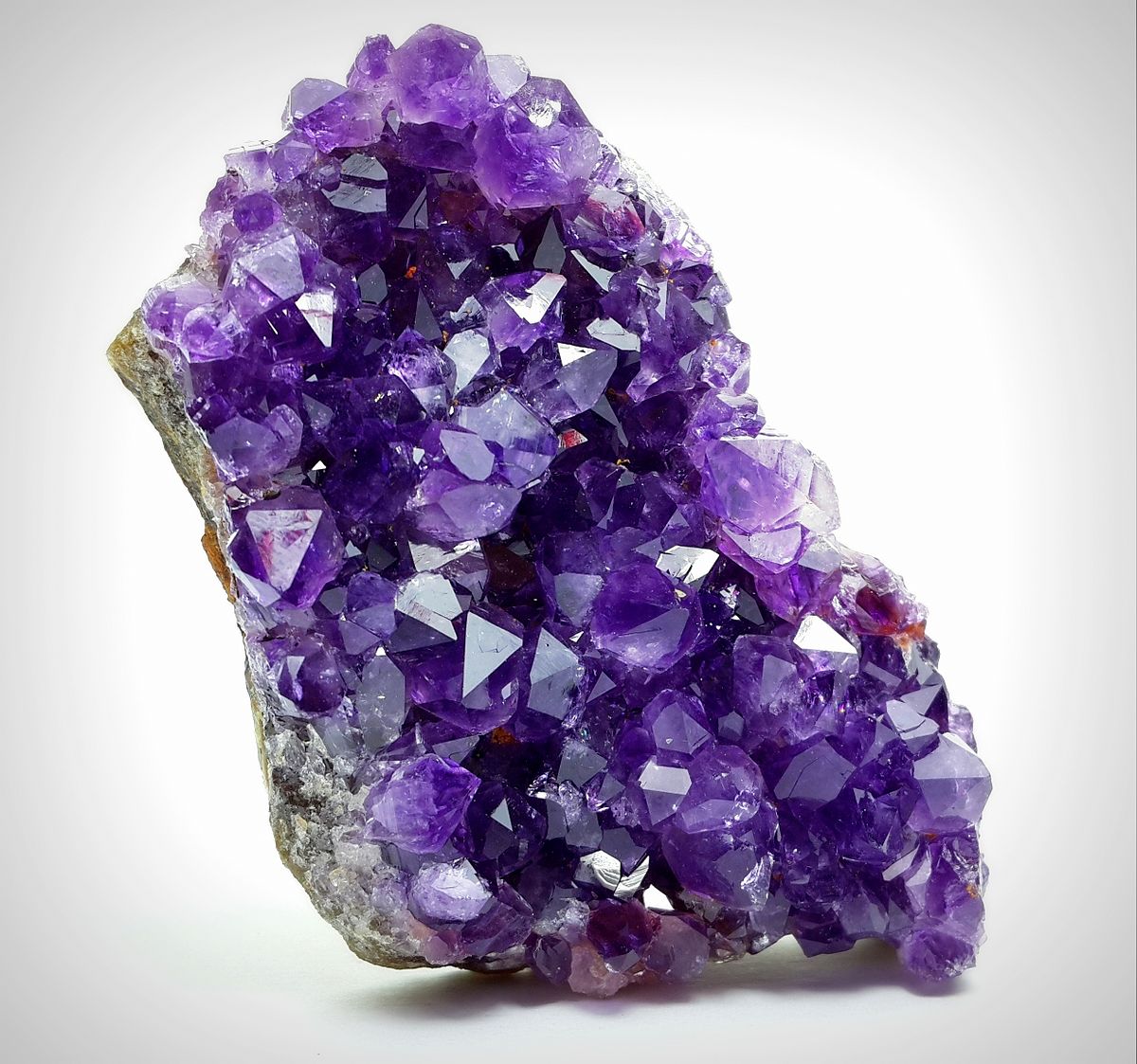
Explanation of the role of amethyst in mineralogy and geology
In mineralogy and geology, amethyst plays an important role as a mineral specimen and as a research material. Here are a few ways that amethyst is used in these fields:
- Mineral Specimen: Amethyst is a popular and valuable mineral specimen that is used by mineral collectors and museums for display and study. Its unique purple color and crystal structure make it a desirable addition to any collection, and it is often used to showcase the diversity and beauty of the mineral world.
- Indicator of Past Geological Processes: Amethyst is commonly associated with volcanic rocks and can provide important clues about past geological processes. By studying the formation and distribution of amethyst, geologists can better understand the history of volcanic activity in a given area, as well as the processes that led to the formation of the gemstone.
- Research Material: Amethyst is also used in various scientific studies, including geochronology and isotope geochemistry. Because amethyst contains trace amounts of various isotopes, it can be used to study the age of rocks and other geological materials. This information can be used to better understand the timing and nature of geological events, such as volcanic eruptions or mountain-building processes.
- Exploration for Mineral Deposits: Amethyst is often found in association with other minerals, particularly in hydrothermal veins. The presence of amethyst can thus be an indication of the potential for other valuable minerals in the area. By studying the geology of an amethyst deposit, geologists can gain important insights into the potential for mineral exploration and development.
Overall, amethyst is an important mineral in mineralogy and geology, providing valuable information about past geological processes and the potential for mineral deposits. Its unique properties and beauty also make it a desirable addition to any mineral collection or museum display.

Examples of famous amethyst deposits and their geological significance
There are several famous amethyst deposits around the world, each with its own geological significance. Here are a few examples:
- Four Peaks Mine, Arizona: The Four Peaks Mine is one of the largest amethyst deposits in North America. The amethyst crystals found here are formed in volcanic rocks that are approximately 1.4 billion years old. The deposit is significant because it provides important clues about the geologic history of the region, as well as the processes that led to the formation of the amethyst crystals.
- Artigas, Uruguay: Artigas is home to some of the world’s most beautiful and sought-after amethyst geodes. The geodes are formed in volcanic rocks that are approximately 130 million years old. The deposit is significant because it provides important insights into the processes that lead to the formation of these geodes, as well as the factors that contribute to their unique color and crystal structure.
- Maraba, Brazil: Maraba is one of the largest amethyst deposits in the world, with deposits that stretch for over 200 kilometers. The amethyst crystals found here are formed in volcanic rocks that are approximately 1.5 billion years old. The deposit is significant because it provides important information about the geological processes that led to the formation of the amethyst crystals, as well as the potential for other valuable mineral deposits in the region.
- Mont Saint-Hilaire, Quebec: Mont Saint-Hilaire is a famous mineral locality that is home to a variety of rare minerals, including amethyst. The amethyst crystals found here are formed in alkaline igneous rocks that are approximately 120 million years old. The deposit is significant because it provides important insights into the processes that lead to the formation of these rare minerals, as well as the potential for other valuable mineral deposits in alkaline igneous rocks.
Overall, these famous amethyst deposits provide important insights into the geological processes that lead to the formation of amethyst, as well as the potential for other valuable mineral deposits in the regions where they are found.

Summary of key points about amethyst from a geological perspective
Here are some key points about amethyst from a geological perspective:
- Amethyst is a purple variety of quartz that is formed in volcanic rocks and hydrothermal veins.
- It is typically found in association with other minerals, including calcite, pyrite, and hematite.
- Amethyst is valued by mineral collectors and museums for its unique color and crystal structure, and is also used in various scientific studies.
- Its formation is often associated with volcanic activity, and can provide important clues about past geological processes.
- Amethyst deposits can be found all over the world, and their geology provides important insights into the potential for other valuable mineral deposits in the region.
- Amethyst is used in geochronology and isotope geochemistry studies to better understand the age and composition of rocks and other geological materials.
Overall, amethyst is an important mineral from a geological perspective, providing important information about past geological processes, the potential for other valuable mineral deposits, and insights into the age and composition of geological materials.
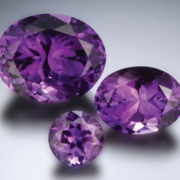
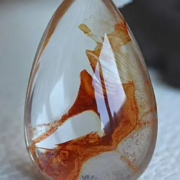
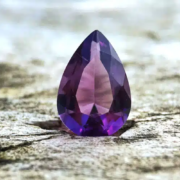
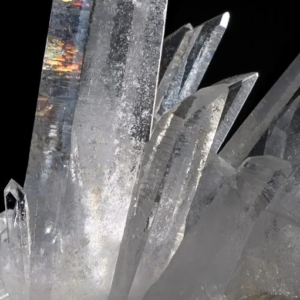
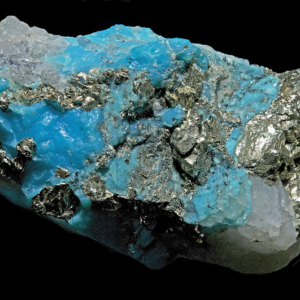
Leave a Reply
Want to join the discussion?Feel free to contribute!